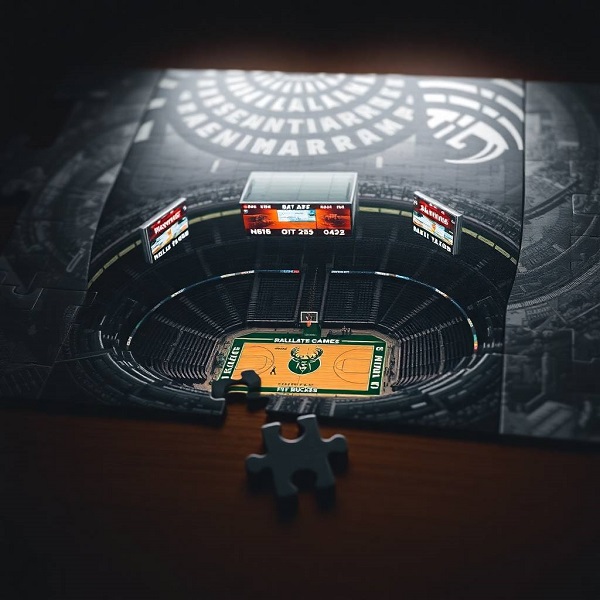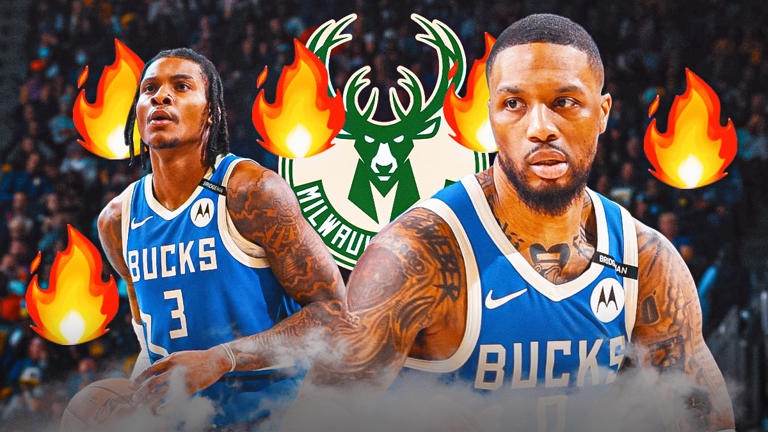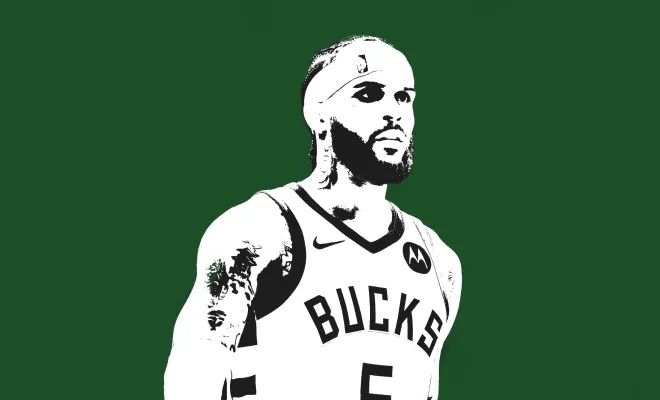The addition of Kevin Porter Jr. (KPJ) to the Bucks roster introduces an intriguing dynamic. KPJ, a talented young guard, brings a unique skill set but also faces challenges in carving out a significant role alongside a superstar like Giannis.
Kevin Porter Jr.’s Strengths
Kevin Porter Jr. is a versatile guard known for his scoring ability, playmaking, and athleticism.
- Scoring Versatility: KPJ can score at all three levels—inside, mid-range, and beyond the arc. His ability to create his own shot off the dribble makes him a valuable offensive weapon. In his time with the Houston Rockets, he averaged 19.2 points per game in the 2022-23 season, showcasing his scoring prowess.
- Playmaking: As a combo guard, KPJ has shown flashes of excellent court vision. He can facilitate the offense, averaging 6.3 assists per game during his Rockets tenure. His ability to handle the ball and set up teammates adds another dimension to the Bucks’ offense.
- Athleticism and Finishing: KPJ’s athleticism allows him to attack the rim with authority. He’s capable of posterizing defenders and finishing through contact, which complements the Bucks’ fast-paced, transition-heavy style.
- Defensive Potential: At 6’4” with a solid wingspan, KPJ has the physical tools to be a disruptive defender. While not yet a lockdown defender, he’s shown the ability to guard multiple positions when engaged.
Kevin Porter Jr.’s Weaknesses
Despite his talent, KPJ has areas of his game that need refinement, particularly in a structured environment like Milwaukee:
- Decision-Making: KPJ’s decision-making can be erratic. He sometimes forces shots or makes risky passes, leading to turnovers. His assist-to-turnover ratio (1.9:1 in 2022-23) reflects this inconsistency, which can be problematic in high-stakes playoff games.
- Shooting Efficiency: While KPJ can score, his efficiency is a concern. His three-point shooting hovered around 36.6% in Houston, but his shot selection often leads to low-percentage attempts. This inefficiency could clash with the Bucks’ need for spacing around Giannis.
- Defensive Consistency: KPJ’s defensive effort has been inconsistent. He can be a liability when not fully engaged, which is a concern for a Bucks team that relies on stout defense to contend for titles.
- Off-Court Concerns: KPJ’s history of off-court issues, including legal troubles, has raised questions about his maturity and reliability. While these are not directly related to his on-court performance, they can impact team chemistry and his role.
The Bucks’ System and KPJ’s Fit
The Bucks’ offense revolves around Giannis Antetokounmpo who demands the ball in the paint and thrives in transition. The team’s supporting cast, including players like Damian Lillard and Khris Middleton, has always been designed to complement Giannis by providing spacing, defence, and secondary play making. KPJ’s skill set overlaps with some of these roles but doesn’t perfectly align with the Bucks’ needs.
KPJ’s ability to handle the ball and create offense could theoretically ease the playmaking burden on Lillard and Giannis. However, his inconsistent shooting and decision-making make him a less-than-ideal fit as a spot-up shooter or off-ball player, roles often required of Bucks guards. Additionally, Milwaukee’s defensive scheme under coach Doc Rivers emphasizes discipline and communication, areas where KPJ has yet to prove himself consistently.
How Giannis’s Presence Impacts KPJ’s Development
Giannis Antetokounmpo’s dominance is both a blessing and a challenge for young players like KPJ. While playing alongside a superstar provides opportunities to learn and compete at a high level, it can also stifle development. Here’s how Giannis’s presence might hinder KPJ’s growth:
- Ball Dominance: Giannis is the focal point of the Bucks’ offense, often initiating plays and commanding touches in the paint. His usage rate (around 32% in recent seasons) leaves limited opportunities for KPJ to handle the ball and develop as a primary playmaker. In Houston, KPJ was a primary option, but in Milwaukee, he’s relegated to a secondary or tertiary role, which limits his ability to refine his decision-making and leadership.
- Offensive Hierarchy: The Bucks’ pecking order is clear: Giannis and Lillard are the top options. KPJ, as a younger player, must adapt to a lower-usage role, which can stunt his offensive growth. His scoring instincts may be underutilised, forcing him to focus on spot-up shooting or cutting—skills that are not his strongest.
- Pressure to Win Now: The Bucks are in a championship-or-bust mode, with Giannis at the peak of his prime (30 years old in 2025). This high-stakes environment leaves little room for KPJ to experiment or make mistakes, both critical for a young player’s development. Coach Rivers is unlikely to give KPJ extended minutes if his play doesn’t immediately translate to wins.
- Cultural Fit: KPJ’s past off-court issues and inconsistent effort could clash with this environment, potentially leading to reduced trust from coaches and teammates. Without a strong support system to guide him, KPJ’s development could stall. This is a team designed to pamper Giannis.
Potential Paths for KPJ’s Development
For KPJ to thrive in Milwaukee, he must address his weaknesses and leverage his strengths within the Bucks’ system. Here are some potential strategies:
- Embrace a Sixth-Man Role: KPJ could excel as a spark plug off the bench, leading the second unit with his scoring and play making. This role would give him more freedom to handle the ball while still contributing to wins.
- Improve Efficiency: Focusing on better shot selection and increasing his three-point accuracy would make KPJ a better fit alongside Giannis. Studying players like Jrue Holiday, who thrived as a complementary piece, could guide his development.
- Defensive Growth: Committing to defence would earn KPJ more trust from Rivers and Giannis. Becoming a two-way player would secure him consistent minutes.
- Mentorship from Veterans: Learning from Lillard and Middleton, both experienced scorers and playmakers, could help KPJ refine his decision-making and professionalism. Most of all he has to kill his ego to put up with Giannis.
So is KPJ a go or will he be another Giannis scapegoat?
Kevin Porter Jr. is a talented but flawed player with the potential to be a valuable asset for the Milwaukee Bucks. His scoring, play making, and athleticism are undeniable strengths, but his decision-making, efficiency, and defensive consistency need work. Giannis Antetokounmpo’s dominance creates challenges for KPJ’s development by limiting his touches, role, and margin for error. For KPJ to grow in Milwaukee, he must adapt to a complementary role, improve his efficiency, and embrace the Bucks’ winning culture. If he can do so, he could carve out a meaningful place here. If not, his time in Milwaukee may be short-lived, especially with trade rumours swirling around Giannis and the team’s future. Nobody ever blames Giannis so life with the Bucks is a constantly perilous journey of being the scape goat.




